Discovered by Richard M. West Orbital period 558,300 years Inclination 43.0664° Last perihelion 25 February 1976 | Discovery date August 10, 1975 Discovered 10 August 1975 Discoverer Richard Martin West | |
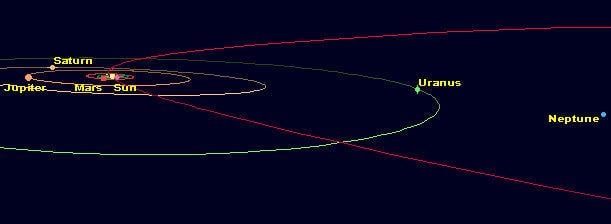 | ||
Alternativedesignations C/1975 V1, 1976 VI, 1975n Epoch 1976-Mar-03(JD 2442840.5) Aphelion up to 70,000 AU(1.1 light-years) Similar Comet Kohoutek, Comet Ikeya–Seki, Comet Bennett, Comet Hyakutake, Solar System | ||
Comet west bear trap official video
Comet West, formally designated C/1975 V1, 1976 VI, and 1975n, was a comet which became one of the brightest objects in the night sky as it passed through the inner solar system in 1976. It is often described as a "great comet".
Contents
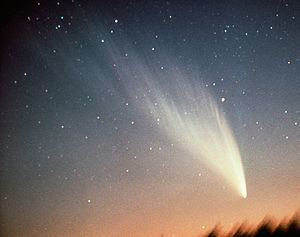
Comet west strong gust
History
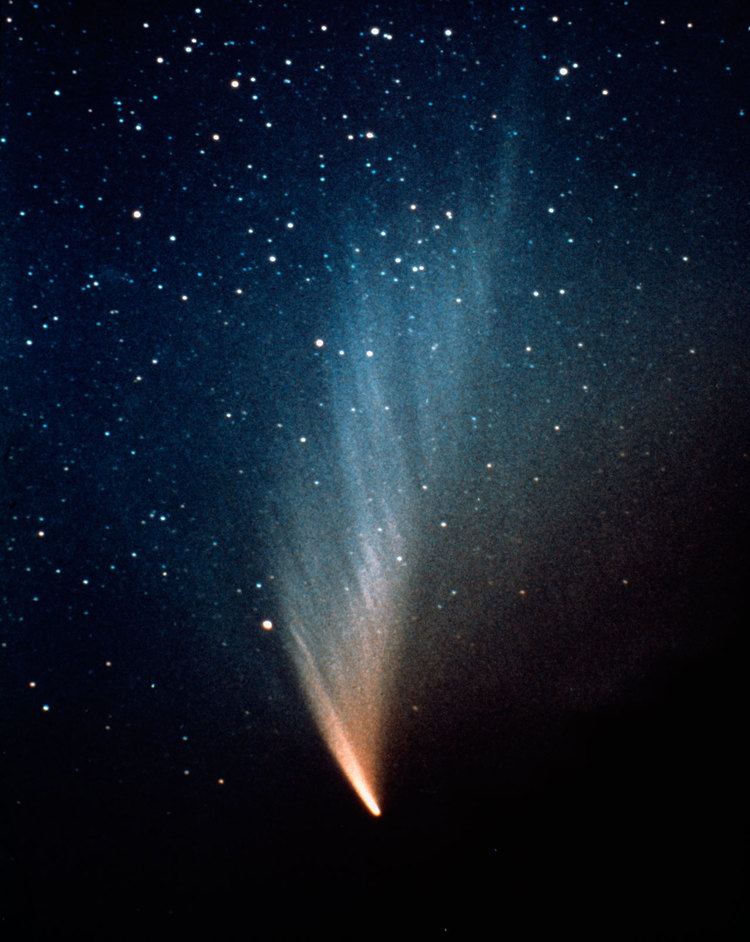
It was discovered photographically by Richard M. West, of the European Southern Observatory, on August 10, 1975. The comet came to perihelion (closest approach to the Sun) on February 25, 1976. During perihelion the comet had a minimum solar elongation of 6.4° and as a result of forward scattering reached a peak apparent magnitude of -3. From February 25 through the 27th, observers reported that the comet was bright enough to study during full daylight.
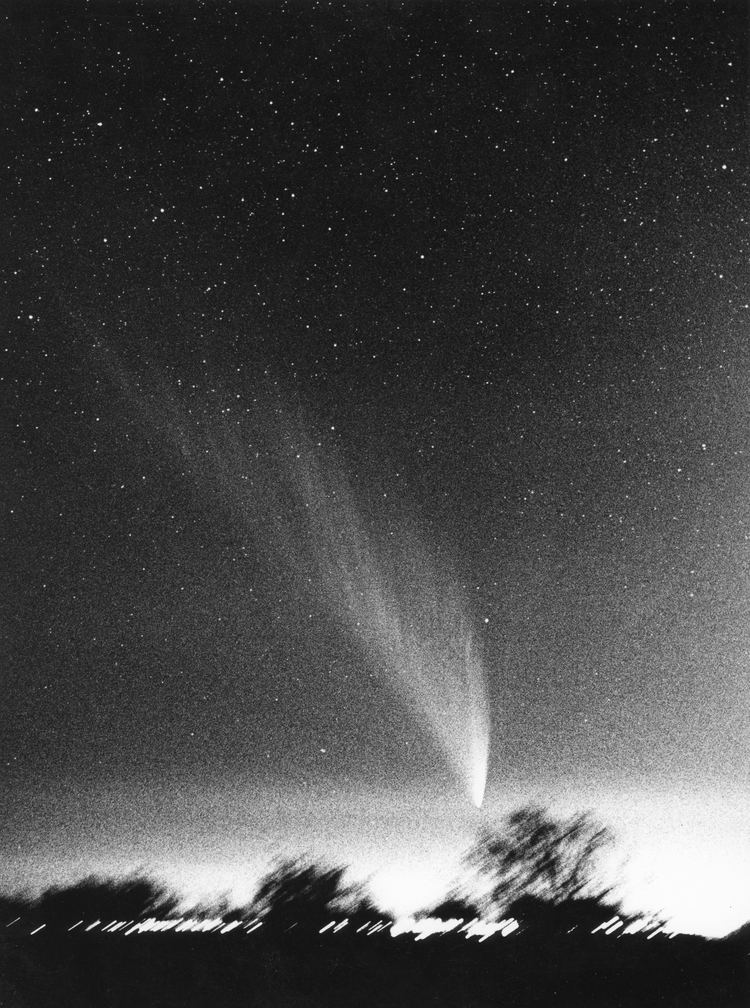
Despite its brightness, Comet West went largely unreported in the popular media. This was partly due to the relatively disappointing display of Comet Kohoutek in 1973, which had been widely predicted to become extremely prominent: scientists were wary of making predictions that might raise public expectations.
Period
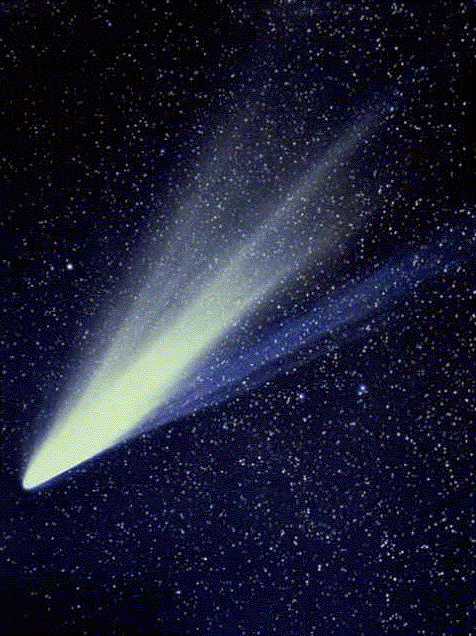
With a nearly parabolic trajectory, estimates for the orbital period of this comet have varied from 254,000 to 558,000 years, and even as high as 6.5 million years. Computing the best-fit orbit for this long-period comet is made more difficult since it underwent a splitting event which may have caused a non-gravitational perturbation of the orbit. The 2008 SAO Catalog of Cometary Orbits shows 195 observations for C/1975 V1 and 135 for C/1975 V1-A, for a combined total of 330 (218 observations were used in the fit). Comet C/1999 F1 has a similar period. Aphelion is estimated at 70,000 AU, but orbital periods of millions of years are very unstable as they are subject to perturbations by passing stars and the galactic tide.
Breakup
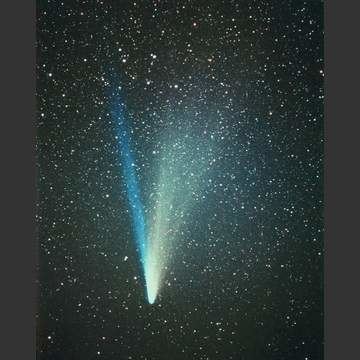
Before the perihelion passage, and using 28 positions obtained between 1975 August 10 and 1976 January 27, Comet West was estimated to have an orbital period of about 254,000 years. As the comet passed within 30 million km of the Sun, the nucleus was observed to split into four fragments.
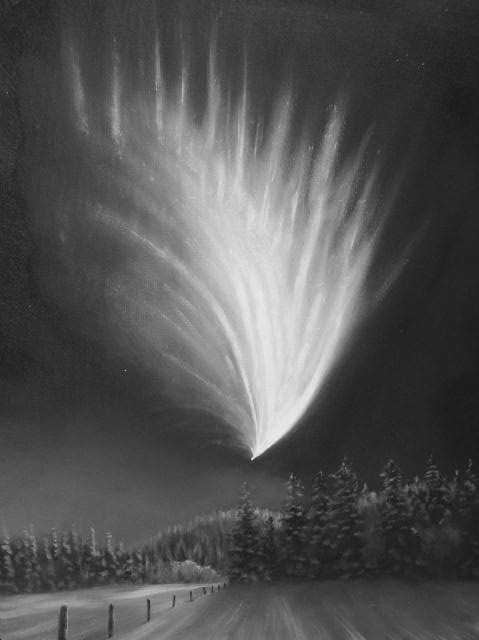
The first report of the split came around 7 March 1976 12:30UT, when reports were received that the comet had broken into two pieces. Astronomer Steven O'Meara, using the 9-inch Harvard Refractor, reported that two additional fragments had formed on the morning of 18 March.
The fragmentation of the nucleus was, at the time, one of very few comet breakups observed, one of the most notable previous examples being the Great Comet of 1882, a member of the Kreutz Sungrazing 'family' of comets. More recently, comets Schwassmann-Wachmann-3 (73/P), C/1999 S4 LINEAR, and 57/P du Toit-Neujmin-Delporte, have been observed to disintegrate during their passage close to the Sun.
The comet has been more than 50AU from the Sun since 2003.
Nomenclature
In the nomenclature of the time, it was known as Comet 1976 VI or Comet 1975n, but the modern nomenclature is C/1975 V1. (Note that "1976 VI" uses the Roman numeral VI = 6, while "C/1975 V1" is the letter V and the number 1).
